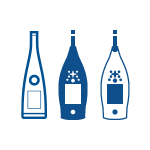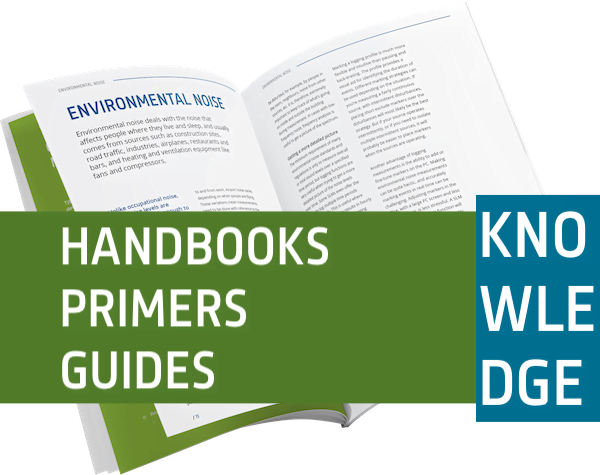 FROM SIMPLE TO ADVANCED
FROM SIMPLE TO ADVANCEDB&K SOUND LEVEL METERS
What are Leq and SEL?
Equivalent Continuous Sound Level (Leq )
Leq (equivalent continuous sound level) is defined as the steady sound pressure level which, over a given period of time, has the same total energy as the actual fluctuating noise. Thus, the Leq is in fact the RMS sound level with the measurement duration used as the averaging time.
Assessing a fluctuating noise level means getting a value for a level that is, in simple terms, the average level. Leq is defined as the steady sound pressure level which, over a given period of time, has the same total energy as the actual fluctuating noise. It is also known as the equivalent continuous sound level, or the time-averaged sound level.
Sound Exposure Level (LAE or SEL)
An alternative energy parameter is the sound exposure level - LAE or SEL - a logarithmic measure of the sound exposure of a sound relative to a reference value. It is similar to the Leq as the total sound energy is integrated over the measurement period. However, instead of averaging over the measurement period, a reference duration of 1 second is used.
Leq can be measured directly with a professional sound level meter, if an A-weighting filter is used. This is it is expressed as LAeq, the measurement of the equivalent continuous sound level using the A-weighted filter network.
When to use Leq and SEL?
Let us look at some typical cases which illustrate when a clearer answer can be easily obtained by using an Sound Level Meter.
Leq Measurements
When measuring Leq the choice of measurement duration depends on the type of noise.
Fluctuating Machinery Noise
Fluctuations in machinery noise can make it difficult to put a value on the noise level. It can be even more difficult if the machine has a complex working cycle. The reason for the measurement uncertainty is that the analogue sound level meter does not provide time constants which are of sufficient duration. However, this can be overcome by measuring the overall energy of the noise.
For relatively steady noises such as machinery noise, the reading can be taken when the display of the instrument has stabilized. With cyclical noise, the measurement period should include an integer number of cycles so that an Leq measurement effectively represents the true average SPL, having the same energy as the fluctuating sound.
Long-term Noise Exposure
It is often necessary to rate noise on a long-term basis. In industry, workers’ exposure to noise during work is assessed to establish its acceptability.
In towns and dwellings, environmental noise produced by traffic, industry, etc., is measured to estimate annoyance caused by noise and thereby the degree of community reaction to be expected. In both cases, noise may vary considerably over the exposure period. Recordings of a time-varying RMS do not allow either direct comparison or simple rating of noise exposure.
Leq measurements for long-term exposure rating, require the selection of representative measurement periods. In the case of occupational noise exposure, this may be a whole working day, or alternatively parts of the day in which representative measurements of the entire working day can be made.
Similarly, community noise exposure can be assessed by measurement of Leq over a whole day, or by taking ‘period’ Leq measurements of representative intervals within typical periods (for example, quiet periods during the daytime, rush hours, evening, night).
LAE (SEL) Measurements
LAE (SEL) is numerically equivalent to the total sound energy, whereas Leq is proportional to the average sound power. Leq measurements give us very useful results in many situations. However, an Leq measurement does not remove ambiguity in the case of transient noise, for example, from an aircraft fly-over or a vehicle pass-by.
Transient Noise
These situations often result in wide variations from background noise to the maximum level and if only the maximum level is reported, information on the duration of the noise (an important feature for rating annoyance) is lost. This also makes it difficult to compare between rapid and slow events and to combine different events for noise prediction purposes.
Since Leq is an energy average, only the highest levels (from the maximum to, say, 15 to 20 dB below it) contribute significantly to the total energy. Hence, if a measurement begins and ends in the background noise, the resulting Leq will depend on the measurement period, even though the total energy is the same.
In such a case, the use of an LAE (SEL) eliminates the influence of the measurement duration. Although the total sound energy is integrated over the measurement period – as with Leq – instead of then averaging this over the measurement period, a reference duration of 1 s is used.
지식센터
다운로드는 무료입니다. 다운로드를 원하시면 홈페이지 로그인 후 이용해주시기 바랍니다.
회원가입하시면 제품 매뉴얼, 핸드북, 제품 적용 사례, 테크니컬 노트 등 다양한 내용을 만날 수 있습니다.


